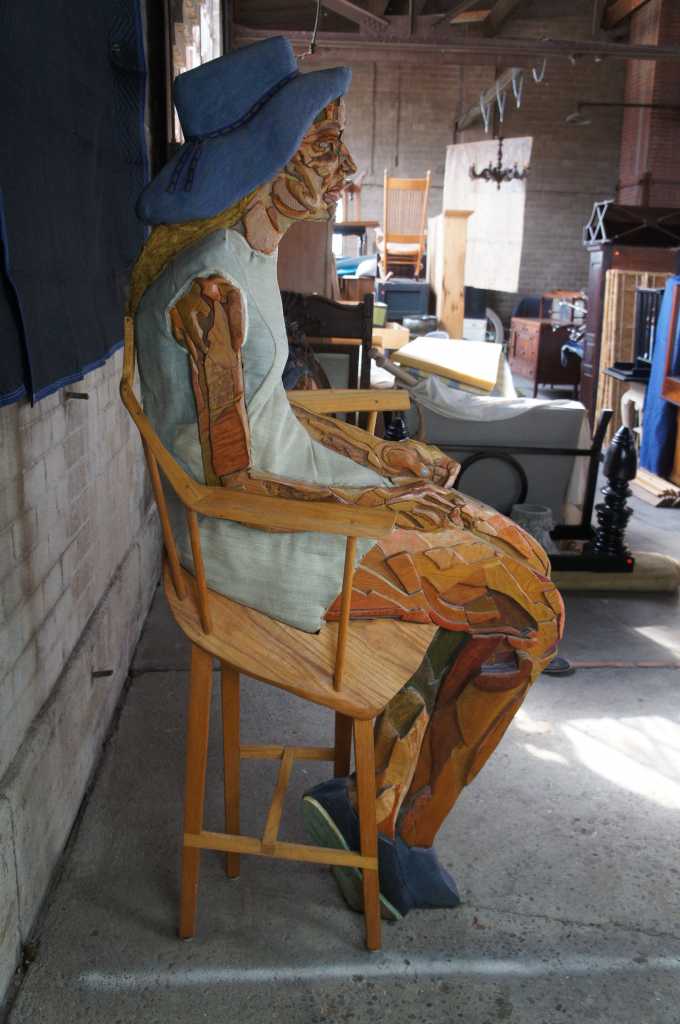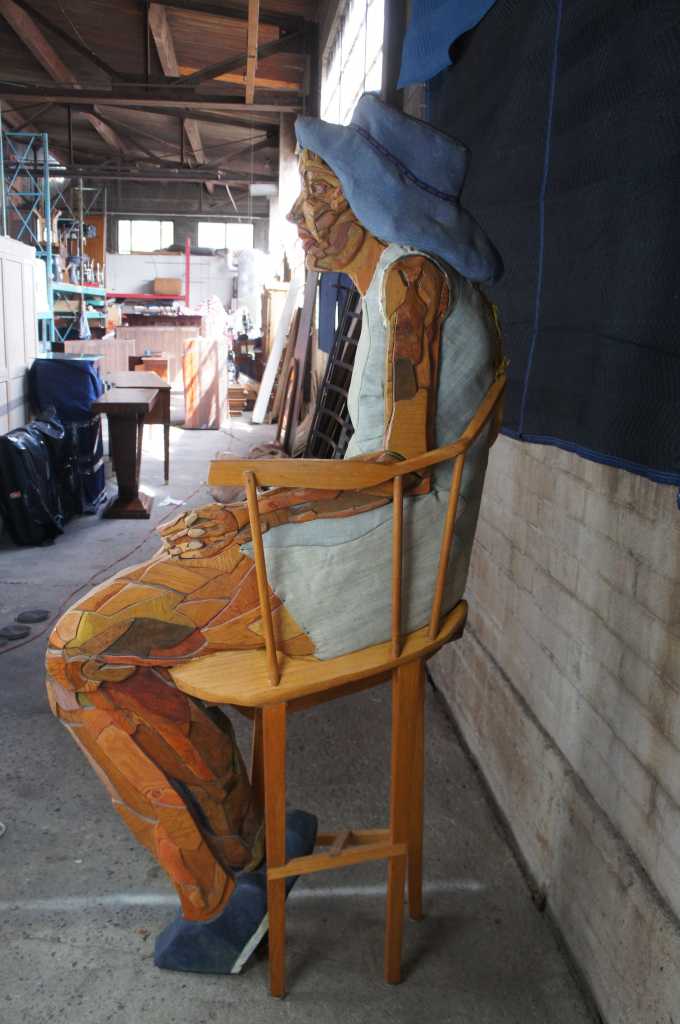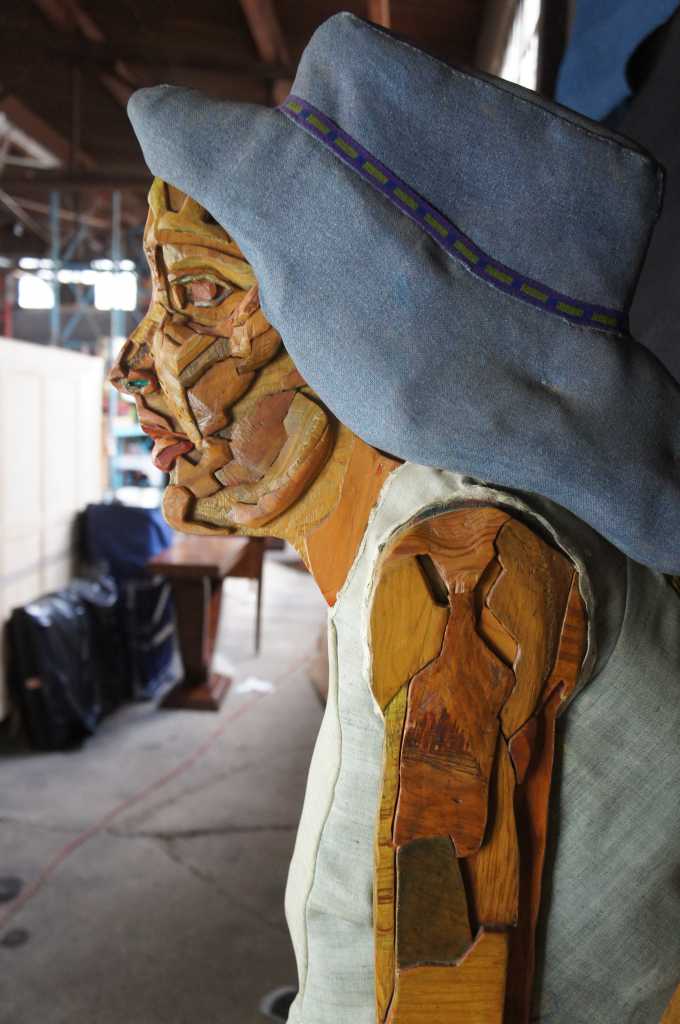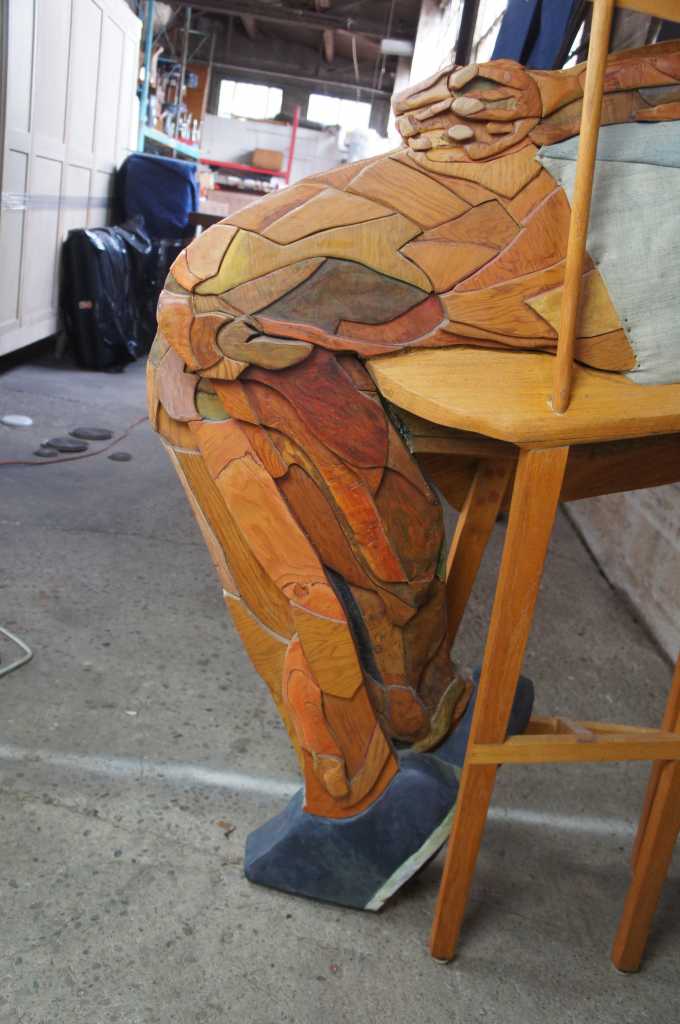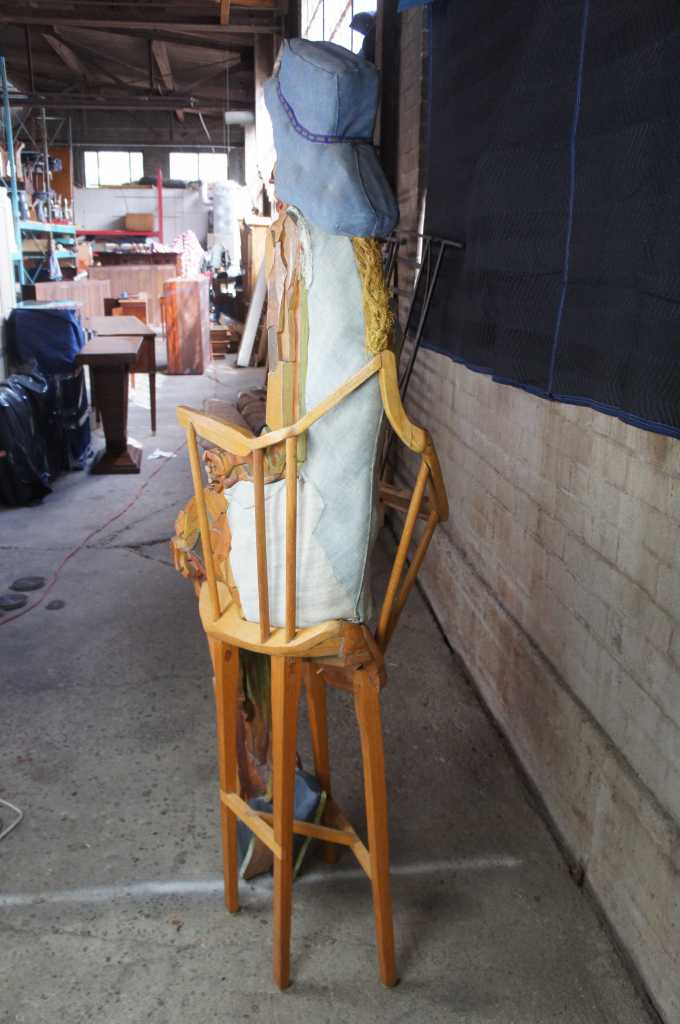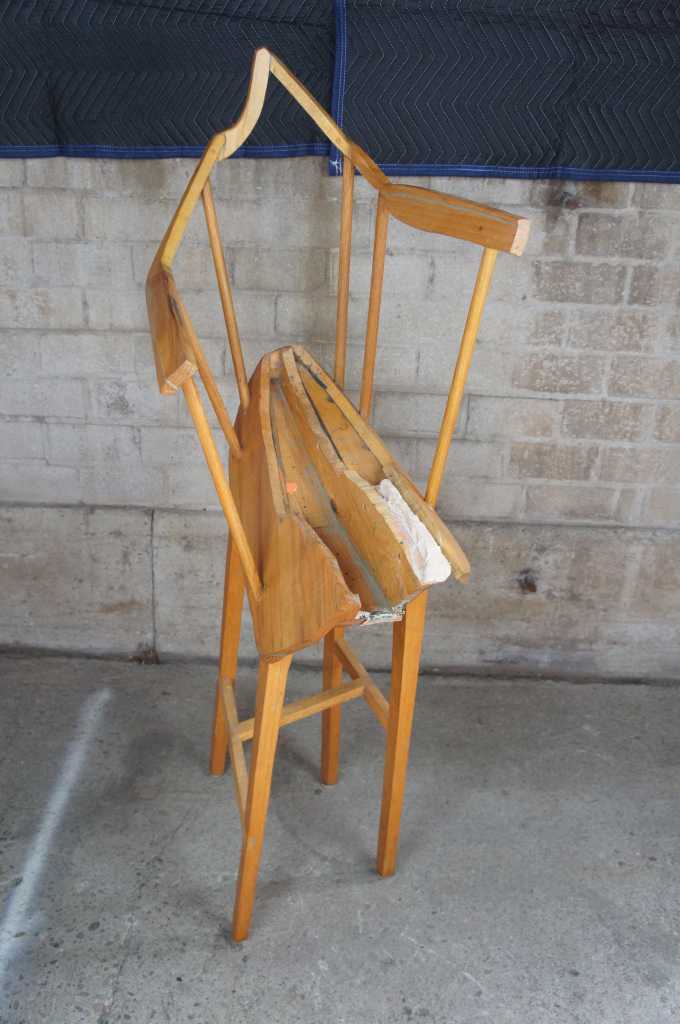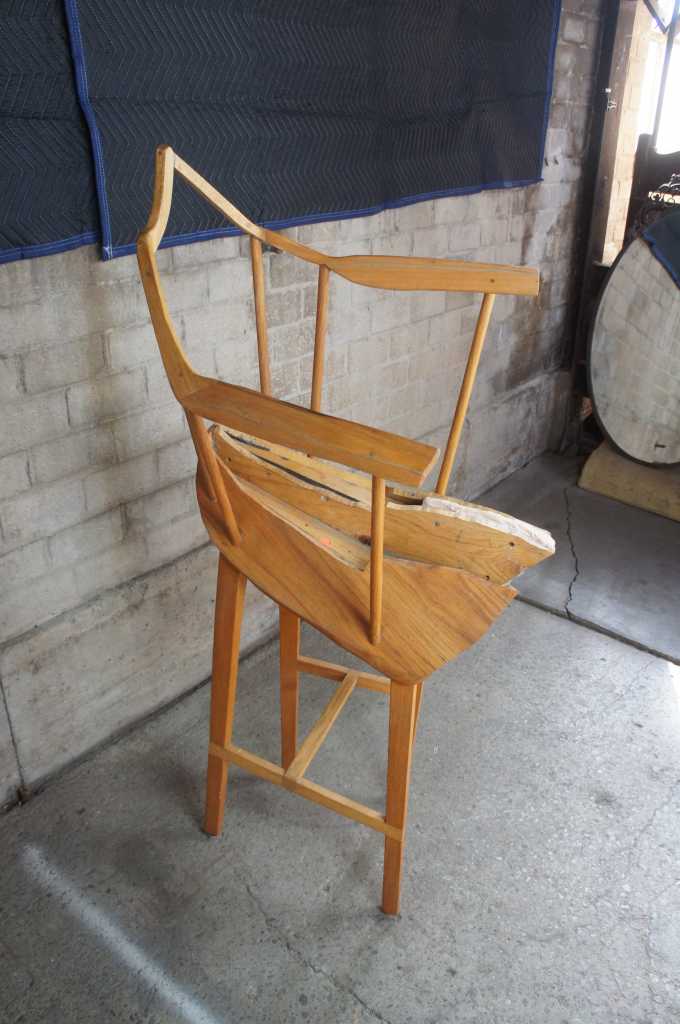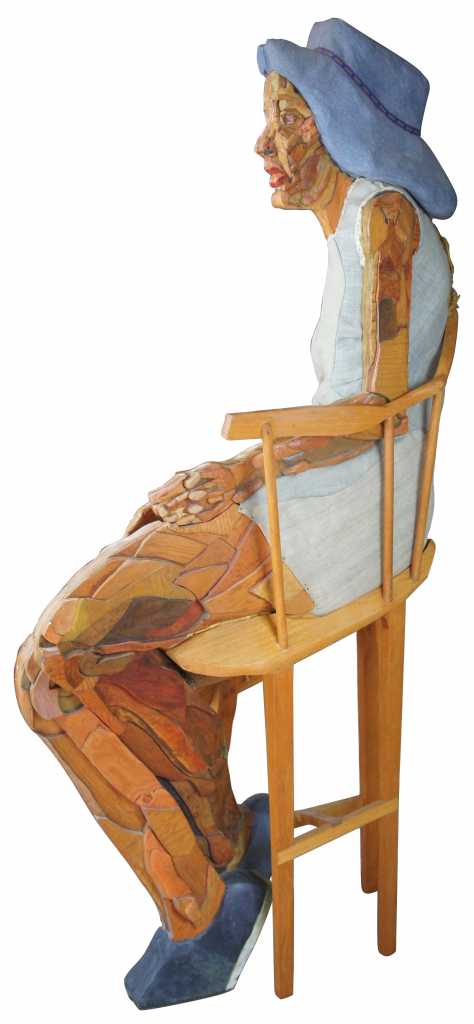
Gail by Thomas Giebink Larger than Life Wood Art Sculpture Figure Woman in Chair
$6,400.00
Shipping:
Free Shipping Included
Delivery:
Estimated 2-15 Business Days
Payments:
Credit Card, Check, Cash, PayPal, Apple Pay, Venmo
Returns:
30 Days 100% Money Back Guarantee, Buyer Pays Return Shipping
Description
Thomas Giebink has been working on his “Circus Fantastical” series for 40 years, creating pieces that would fit into a world of his imagination.
It all started with chairs. There was a chair in painting “Gail,” featuring and named for an ex for “obvious reasons.” When Giebink started to create relief-style copies of his paintings, the chair stood out.
“When I took it apart, it was sort of squished,” he said from his studio east of Bozeman last month.
His latest project, a pair of rocking chairs which seem to be about to tip forward while at rest, follow this vision.
“I see all the big work as three-dimensionalized paintings,” he said.
“Shadow Chair,” a piece currently on display at the Ecce Gallery in the Emerson Center was born from a shadow a chair made on the floor. Giebink decided he would try to create a three-dimensional version in wood, capturing the shape as quickly as possible before the light could change.
“I don’t think my landlord appreciated that I used magic marker on the floor,” Giebink said.
Yet his chair has been appreciated, as has Giebink’s desire to create pieces which seem both fantastic and functional. He talks about the countless hours over five months spent trying to make the off-kilter chairs rock correctly, the sanding and shaving of each piece, the splines and dowels holding it together. It’s not a chair as we know it, but the basis of construction is there.
“It’s really unorthodox woodworking,” he said. “But if you’re going to work in wood, you should work in wood.”
A friend once told him he should make the pieces like sculptures, out of clay. Giebink’s vision, however, relies on creating a version of reality recalling the original.
Giebink likes art “you can move around in,” perhaps inspired by one of his professors at the University of Iowa. Byron Burford was told by wife, Kay, he couldn’t buy a circus. Instead, Burford built one out of mechanized painted canvases and toured it as the Great Byron Burford Circus of Artistic Wonders. Then there was Red Grooms, whose surreal replica of a Crystal, Minnesota Target store was on display in Dayton for a month in 1970.
A background in public television covering big multimedia performance pieces in the 1970s and documentary series, such as a ‘80s “wrasslin’” show, provided further proof our reality is subjective.
“When you see something on TV, it’s a very small slice of what is actually happening in the area,” he said.
Now, Giebink works mainly in large sculptural and installation pieces. Paintings are studies, he said, for these projects.
“Ideally, a piece of sculpture should change the room it’s in,” he said. “...In doing that it changes you, which is the point of art, I think.”
An outline taped onto the floor marks the space for Giebink’s next anti-gravity room. Similar to previous installations, the room will play with our realities using Giebink’s sculptural furniture pieces, his film background, and the idea of being able to walk up walls depending on the point of view. The room may take four or five years. At 70, Giebink said it may be his last project. It’s time he build his own circus, take it back to Burford’s inspiration.
“There’s a sense of time in relation to all this stuff too,” he said. “If I don’t finish it, It won’t get finished. It’s like being up against a deadline.”
Condition
Very good
Dimensions
TBD


